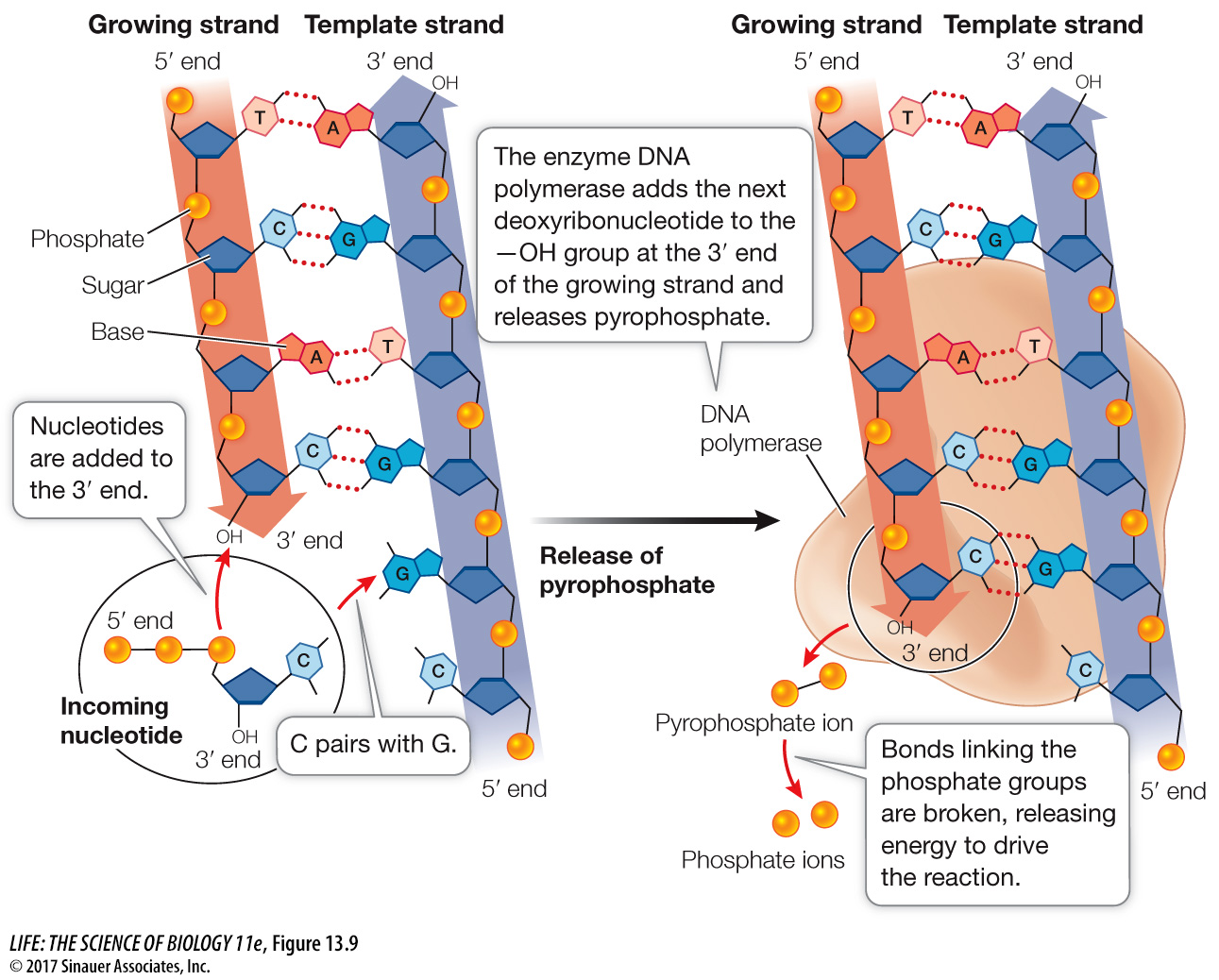There are two steps in DNA replication
Semiconservative DNA replication in the cell involves several different enzymes and other proteins. It takes place in two general steps:
The DNA double helix is unwound to separate the two template strands and make them available for new base pairing.
As new nucleotides form complementary base pairs with template DNA, they are covalently linked together by phosphodiester bonds, forming a polymer whose base sequence is complementary to the bases in the template strand.
The nucleotides that make up DNA are deoxyribonucleoside monophosphates because they each contain deoxyribose and one phosphate group (see Figure 4.1). The four free monomers that are brought together to form DNA are the deoxyribonucleoside triphosphates dATP, dTTP, dCTP, and dGTP, collectively referred to as dNTPs. They are called triphosphates because each has three phosphate groups. The three phosphate groups are attached to the 5′ carbon on the deoxyribose sugar (as shown in the incoming nucleotide in Figure 13.9).

Note that during DNA replication nucleotides are added to the growing new strand at the 3′ end—the end at which the DNA strand has a free hydroxyl (—OH) group on the 3′ carbon of its terminal deoxyribose. In the formation of the phosphodiester linkage (a condensation reaction), two of the phosphate groups on an incoming dNTP are removed [as pyrophosphate (PPi)], and the remaining phosphate is bonded to the 3′ carbon on the terminal deoxyribose (see Figure 4.2). Just as energy is released when ATP is hydrolyzed to AMP (with subsequent hydrolysis of PPi to two phosphates), energy is released by the hydrolysis of the dNTP, and this energy is used to drive the condensation reaction.